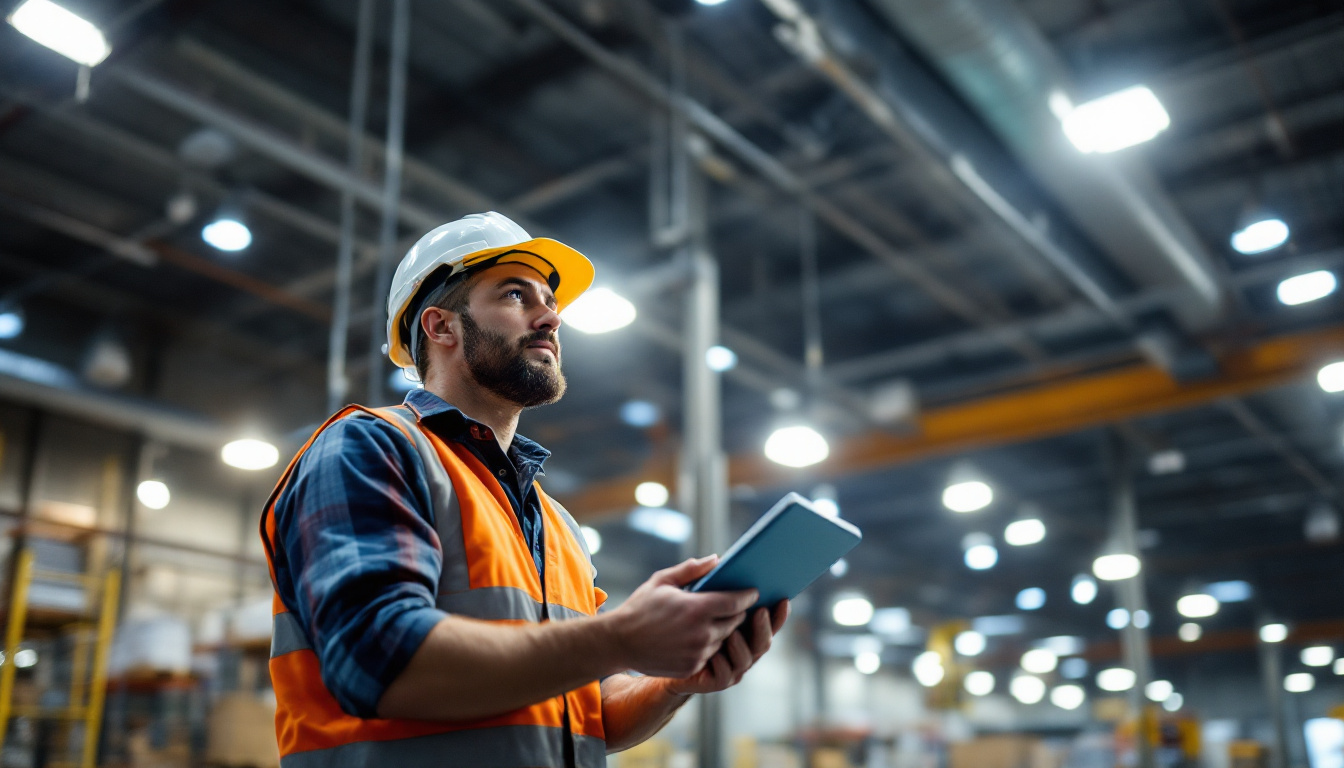
In the world of lighting installation, understanding electrical materials is crucial for ensuring safety, efficiency, and compliance with industry standards. This article aims to provide lighting contractors with a concise overview of essential electrical materials, their applications, and best practices. Whether you’re a seasoned professional or new to the field, this guide will help you navigate the complexities of electrical materials with ease.
Electrical wiring is the backbone of any lighting system. The most common types include non-metallic sheathed cable (NM), armored cable (AC), and conduit wiring. NM cable is widely used in residential applications due to its flexibility and ease of installation. Armored cable, on the other hand, offers additional protection against physical damage, making it suitable for commercial environments. This type of cable is often found in industrial settings where machinery may pose a risk to exposed wiring, providing peace of mind for facility managers.
Conduit wiring, which can be made of metal or PVC, is often employed in areas where wiring needs to be protected from moisture or physical impact. For instance, in outdoor settings or basements prone to flooding, using conduit can prevent water damage to the wiring. Additionally, conduit systems can facilitate future upgrades or repairs, as they allow for easier access to the wires within. Understanding these types of wiring will help contractors select the right materials for specific projects, ensuring both safety and performance. Furthermore, being knowledgeable about local building codes and regulations can aid in making informed decisions regarding the installation of these wiring types.
Wire gauge refers to the thickness of the wire, which directly impacts its ampacity—the maximum amount of current it can safely carry. For lighting applications, it’s essential to choose the appropriate gauge to prevent overheating and potential fire hazards. Generally, 14-gauge wire is suitable for most residential lighting circuits, while 12-gauge is recommended for circuits with higher loads. It’s also important to consider the length of the wire run; longer distances may require a thicker gauge to compensate for voltage drop, ensuring that fixtures receive adequate power.
Contractors should always refer to the National Electrical Code (NEC) for guidelines on wire sizing and ampacity. This ensures compliance with safety standards and helps avoid costly mistakes during installation. Additionally, understanding the environmental factors that may affect wire performance, such as temperature variations and insulation types, can further enhance safety and efficiency. For example, wires installed in attics or crawl spaces may need to be rated for higher temperatures, which could influence the choice of both wire gauge and insulation material. By taking these factors into account, electricians can ensure a reliable and safe electrical system that meets the demands of modern lighting needs.
Lighting fixtures come in various forms, each designed for specific applications. Common types include recessed lights, track lights, pendant lights, and wall sconces. Each fixture type has unique installation requirements and electrical specifications that contractors must consider.
Recessed lights, for instance, require careful consideration of the housing and trim selection, while track lights offer versatility in design and placement. Understanding the characteristics of each fixture type will enable contractors to make informed decisions that enhance the overall aesthetic and functionality of a space. Moreover, pendant lights can serve as statement pieces in dining areas or kitchens, providing both illumination and style. Their height can be adjusted to create the desired ambiance, making them ideal for various ceiling heights and room designs. Wall sconces, on the other hand, can add a layer of depth and warmth to a room, often used in hallways or as accent lighting in living spaces. When strategically placed, they can highlight artwork or architectural features, contributing to the overall design narrative of a home or commercial setting.
Ballasts and drivers are essential components for controlling the current to lighting fixtures, particularly for fluorescent and LED lights. A ballast regulates the voltage and current to fluorescent lamps, ensuring they operate efficiently and safely. Conversely, LED drivers convert the AC voltage from the electrical supply into a suitable DC voltage for LED fixtures.
Contractors must be aware of the specific requirements for each type of fixture to select the appropriate ballast or driver. This not only ensures optimal performance but also prolongs the lifespan of the lighting system. Additionally, the choice of ballast can significantly impact energy consumption; for example, electronic ballasts are generally more efficient and quieter than their magnetic counterparts. In the case of LED drivers, factors such as dimming capabilities and thermal management are crucial, as they can affect the light output and energy efficiency. Understanding these components allows contractors to tailor lighting solutions that not only meet the functional needs of a space but also align with energy-saving goals and sustainability practices in modern design.
electrical connectors play a vital role in establishing secure and reliable connections between wires and fixtures. Common types include twist-on wire connectors, push-in connectors, and terminal blocks. Each type offers different advantages, such as ease of installation or enhanced conductivity.
For lighting contractors, selecting the right connector type is crucial for ensuring safety and reducing the risk of electrical failures. Properly secured connections minimize the potential for arcing and overheating, which can lead to system malfunctions or even fires.
In addition to connectors, the choice of fasteners is equally important. Screws, anchors, and clips are commonly used to secure fixtures and wiring in place. The selection of fasteners should be based on the material of the surface being installed on, as well as the weight and design of the fixture.
Using the appropriate fasteners not only ensures a secure installation but also contributes to the overall safety and longevity of the lighting system. Contractors should always adhere to manufacturer specifications when selecting fasteners for their projects.
Safety is paramount in the electrical industry, and lighting contractors must prioritize the use of personal protective equipment (PPE). Essential PPE includes insulated gloves, safety glasses, hard hats, and non-slip footwear. These items help protect against electrical shocks, falls, and other workplace hazards.
Contractors should also ensure that their team is trained in safety protocols and understands the importance of PPE in preventing accidents. Regular safety meetings and training sessions can reinforce the significance of maintaining a safe working environment.
Adhering to local and national electrical codes is critical for ensuring the safety and legality of lighting installations. The National Electrical Code (NEC) provides guidelines for various aspects of electrical work, including wiring methods, fixture placement, and circuit protection.
Contractors should stay informed about any updates or changes to the codes that may affect their work. Regularly reviewing and understanding these regulations will help avoid potential fines and ensure that installations meet safety standards.
With a growing emphasis on sustainability, lighting contractors are increasingly tasked with providing energy-efficient solutions. LED lighting has emerged as a popular choice due to its low energy consumption and long lifespan. Compared to traditional incandescent bulbs, LEDs can use up to 80% less energy while providing the same level of brightness.
Contractors should educate clients on the benefits of energy-efficient lighting options, including potential cost savings on electricity bills and reduced environmental impact. By promoting these solutions, contractors can position themselves as forward-thinking professionals in the industry.
Incorporating smart lighting technologies into projects can further enhance energy efficiency and user convenience. Smart lighting systems allow for remote control, scheduling, and automation, enabling users to optimize their lighting based on their needs and preferences.
Contractors should familiarize themselves with various smart lighting products and their installation requirements. This knowledge not only expands service offerings but also meets the growing demand for modern, connected home solutions.
Having the right tools is essential for any lighting contractor. Common tools include wire strippers, multimeters, voltage testers, and screwdrivers. Each tool serves a specific purpose and contributes to the efficiency and quality of the installation process.
Investing in high-quality tools can make a significant difference in the ease of installation and the overall quality of work. Contractors should regularly maintain their tools to ensure they remain in optimal condition, ready for any job.
Testing and troubleshooting equipment, such as circuit analyzers and clamp meters, are invaluable for diagnosing issues in lighting systems. These tools help contractors identify problems quickly, allowing for efficient repairs and minimizing downtime for clients.
Being equipped with the right testing tools not only enhances a contractor’s ability to deliver quality service but also builds trust with clients who appreciate timely and effective solutions to their lighting issues.
Understanding electrical materials is essential for lighting contractors looking to excel in their field. From wiring and fixtures to safety considerations and energy efficiency, each aspect plays a crucial role in the success of lighting installations. By staying informed and utilizing the right materials and tools, contractors can ensure safe, efficient, and compliant installations that meet the needs of their clients.
As the industry continues to evolve, embracing new technologies and sustainable practices will further enhance the value that lighting contractors provide. By prioritizing education and adherence to safety standards, contractors can position themselves as trusted experts in the ever-changing landscape of electrical materials and lighting solutions.
Ready to elevate your lighting projects with superior materials that promise safety, efficiency, and compliance? Look no further than LumenWholesale for all your electrical material needs. Our spec-grade lighting products are carefully selected to meet the highest industry standards, ensuring you deliver exceptional results every time. Say goodbye to inflated markups and hello to unbeatable wholesale prices, plus enjoy the added benefit of free shipping on bulk orders. Don’t compromise on quality or value—choose LumenWholesale for the perfect blend of affordability and convenience. Wholesale Lighting at the Best Value is just a click away. Upgrade your lighting solutions today!

Discover the essentials of high bay occupancy sensors and their impact on modern lighting solutions.

Discover how bright lightbulbs can transform safety in lighting installations.

Discover how 50 feet LED lights are revolutionizing energy efficiency in homes and businesses.

Discover how to integrate smart lighting solutions into your home with our comprehensive guide on future-proofing your lighting projects.